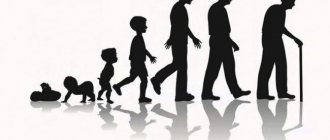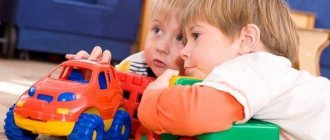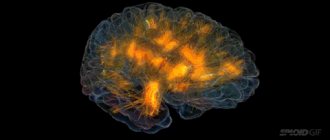An important part of the study of social functions, the process of adaptation and the entry of individuals into society largely depends on the activities of specialized institutions that are engaged in consideration, study, analysis and development in the field of socialization. Institutions are presented in the form of specific groups, thanks to the activities of which the subject is introduced to universal, cultural, behavioral and moral values. These institutions serve as transmitters of social experience.
Structure
Agents of human socialization and their functions
Conventionally, three stages can be distinguished: pre-labor, labor, post-labor. The first stage includes all educational institutions: kindergarten, sections, school, etc. The second stage is already devoted to work time, during which a person learns to live in a work community. The third stage affects pensioners.
The peculiarity is that the process of passing through social institutions is not always linear. The child may not go to kindergarten or be homeschooled. He can also join informal groups that will also broadcast their experience to him.
Before entering a preschool institution, a child is under the influence of his family: parents, brothers, sisters, close relatives. It is from them that he learns his first experience. In educational organizations, a person adopts not only knowledge, but also behavior patterns.
Institutions involved in the socialization of individuals allow people to establish a life together. This is important both for work and for existing in the same space: home, city, country.
Functions and purpose
Mechanisms of personality socialization - what are they, types
With the help of special organizations, desirable behavior is encouraged and undesirable behavior is suppressed. For example, at school, children are required to obey certain rules, which are then maintained into adulthood.
Each institute has its own complete set of norms and rules of conduct. This makes people's behavior predictable. Another function is regulatory. It allows you to maintain certain patterns of behavior that help build relationships between people.
The main task of socialization institutions is integrative. It unites members of society and strengthens the connection between them. This is done by instilling norms, values, and rules.
Family is an important stage in a person’s life; everyday experience is passed on in it.
The most significant purposes of social institutions are to maintain the stability of society and meet the needs of people. Without this, the group will not be able to coexist peacefully. Psychology allows us to study the characteristics of relationships and develop effective methods for improving the atmosphere in a team.
Means, methods, mechanisms of socialization
Socialization methods differ in the degree of focus, organization, and control methods.
Every society, every organization, every social group (small or large) develops in its history a set of positive and negative, formal and informal sanctions - methods of suggestion and persuasion, instructions and prohibitions, coercive measures and pressure, up to the use of physical violence, methods of expression recognition, distinction, awards. With the help of these measures and methods, the behavior of a person and entire groups of people is brought into line with the patterns, norms, and values accepted in a given culture.
Agents + factors = mechanisms of socialization.
1) Social and psychological mechanisms.
Imprinting (imprinting) is a person’s fixation at the receptor and subconscious levels of the characteristics of vital objects affecting him.
Imitation is following an example or model. In this case, it is one of the ways of a person’s voluntary and, most often, involuntary assimilation of social experience.
Identification (identification) is the process of a person’s unconscious identification of himself with another person, group, or model.
Empathy (from the Greek empatheia - empathy) is a person’s ability to simultaneously experience those emotions that arise in another person in the process of communicating with him.
Reflection is an internal dialogue in which a person considers, evaluates, accepts or rejects certain values inherent in various institutions of society, family, peer society, significant persons, etc.
2) Social and pedagogical mechanisms of socialization:
The traditional mechanism of socialization (spontaneous) is a person’s assimilation of norms, standards of behavior, views, stereotypes that are characteristic of his family and immediate environment (neighbors, friends, etc.).
The institutional mechanism of socialization functions in the process of human interaction with the institutions of society and various organizations, as specially created for his socialization.
The stylized mechanism of socialization operates within a certain subculture.
Main types
Human cognitive functions - what are they?
It is not always easy to understand which institutions are involved in the socialization of an individual. Conventionally, they can be divided into two groups: primary and secondary. Each of them has its own characteristics, they affect different areas of life.
Primary
This group includes family, peers, kindergarten, school, sports clubs and hobby groups. Socialization agents include parents, relatives, coaches, teachers, and friends.
Important! The father and mother have the most influence, since the child depends on them.
The main role of primary social institutions is to form the essence of the child. He becomes acquainted with gender and role stereotypes, identifies himself by gender, receives a certain status, educational and cultural level.
Parents play a major role in this process. They can have a negative impact on the child, this will lead to the fact that he will not undergo socialization.
At school, children develop self-esteem and learn what success and failure are. They learn to compete, set goals, and analyze their actions. At this age it is important for them to learn to overcome obstacles.
Secondary
In the course of life, a person is influenced by various social institutions. This is work, military service, religious organizations, informal associations, etc.
This group includes the media and the Internet. Agents are representatives of authorities, government agencies, and senior management. In modern society, work is of great importance. It can be called the main factor of integration into society.
With the help of a profession, a person finds his place in the sun, he gains the respect of other people, and it is easier for him to identify himself. Young people at work learn business communication standards and learn to interact with people of different ages.
In the process, a person can come to a different outcome of socialization: accept all norms and values, master them partially, or completely abandon them. All this will affect his future life, so before choosing any position, you need to think carefully about everything.
Political associations also influence socialization
Secondary institutions of socialization influence a person throughout his life.
The role of social organizations
Regulating the life of society is difficult; it is necessary to organize the process of interaction between different people. These tasks are successfully performed by social institutions. The system itself has been developed over the centuries, and it has been successfully honed.
They also help preserve and disseminate information. After all, any learning is nothing more than a person’s opportunity to gain the experience of another generation. Health care institutes are aimed at solving life problems.
When people love each other, they get married. This is aimed at resolving property issues. Social organizations help people regulate their lives. For example, if a person breaks the law, he will receive punishment. As soon as he follows the rules, he will not have problems.
Only thanks to supervisory authorities is the state able to keep a large number of people within limits. Without them, everything will quickly descend into chaos. Before their appearance, their society was controlled by religious associations.
A simple example: at the initial stage of the emergence of humanity, sex life was not controlled in any way. Gradually it became clear that uncontrolled sexual relations lead to illness and the appearance of children with defects.
Therefore, incestuous relationships were prohibited, i.e. marriage between father and daughter, mother and son, brother and sister became prohibited. This is the first social norm; it served as the basis for the creation of the institution of family.
Staying faithful before marriage reduces the likelihood of illness
Those who have extensive socialization experience easily join the team. Such a person will quickly find a common language with everyone and become one of their own. It is also necessary to take into account that each group may have its own norms. For example, in an informal association it is customary to treat each other as equals, i.e. business ethics are meaningless.
Stages of socialization
Stages of socialization:
Answer option No. 1: the first stage is characteristic of early childhood. At this stage, external conditions for regulating social behavior predominate. The second stage of socialization is characterized by the replacement of external sanctions with internal control.
Answer option #2:
1) primary socialization or adaptation stage (from birth to adolescence, when the child assimilates social experience critically, adapts, imitates others);
2) stage of individualization (a person has a desire to distinguish himself from others, a critical attitude towards social norms of behavior is formed);
3) the integration stage goes well if a person is accepted by the group, society. If society rejects a person, then one of the following options is possible: a) maintaining dissimilarity and the emergence of aggressive interactions with people and society; b) changing oneself (“become like everyone else”); c) external agreement, adaptation;
4) labor stage (period of maturity, work activity, when a person acquires social experience);
5) post-labor stage (old age, making an important contribution to the reproduction of social experience, to the process of transmitting it to new generations).
Processes of institutionalization
Despite the fact that modern society has reached a high level of development, the process of formation of social institutions does not stop. The definition of institutionalization makes it clear that the standardization of different norms is still ongoing.
To begin, several stages must pass. The first is the very emergence of a need that needs to be satisfied. The second is the formation of goals. Third, a norm spontaneously appears in the course of social interaction.
Only after this does institutionalization begin, i.e. practical application of the new norm. In the future, it may change slightly and undergo adjustments. A system of sanctions for violation of the norm is also being developed.
The concept of institutionalization includes the creation of a clear status and role structure. It is more difficult with norms that affect relationships between people. For example, a little over a century ago women did not have many rights, but thanks to emancipation this was changed.
A brief description of the institutionalization process includes the concept of social need and organizational design. All these are slow processes.
Social institutions include various government bodies, work teams, family, etc. Their features are studied in pedagogy, law, sociology and other fields. At school, during social studies lessons, children get acquainted with different types of social institutions and write essays about their features.
In what areas does socialization take place?
The expansion and deepening of socialization occurs in three main areas:
1) activity (expansion of types of socialization, orientation in the system of each type of activity, i.e. highlighting the main thing in it, understanding it, etc.),
2) communication (enriching a person’s social circle, developing communication skills);
3) self-awareness (formation of an image of one’s own “I” = self-concept, comprehension of one’s social affiliation, social role, formation of self-esteem).
I am a concept - a person’s system of ideas about himself.









